Created by Johnston McCulley Nationality Californian / Mexican First appearance Argosy (August 1919) | Gender Male Creator Johnston McCulley | |
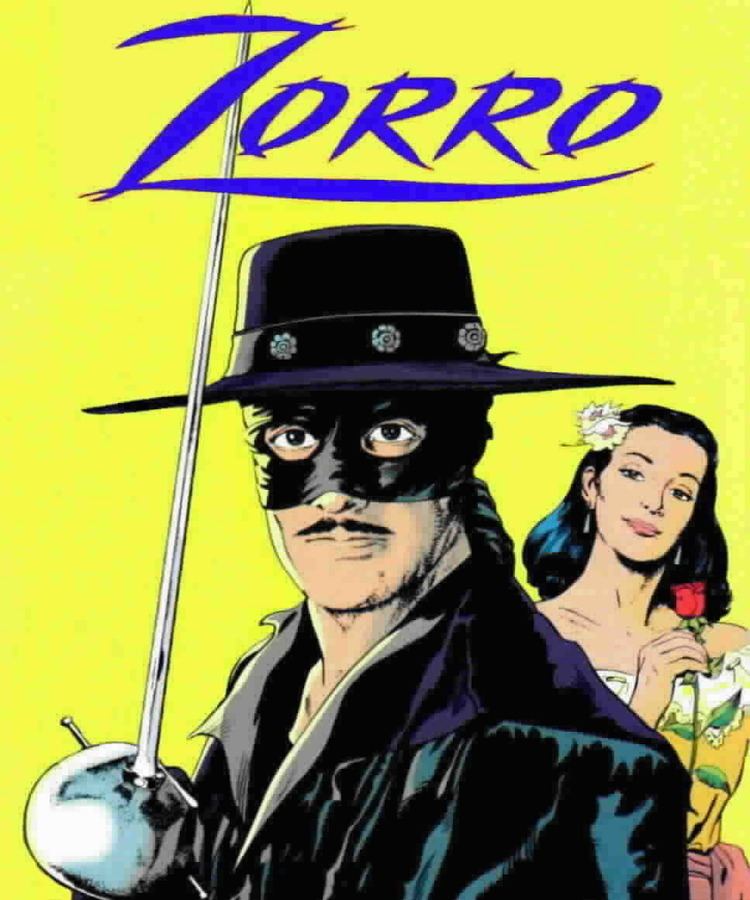 | ||
Movies and TV shows The Mask of Zorro, The Legend of Zorro Played by Antonio Banderas, Guy Williams, Anthony Hopkins, Alain Delon, Tyrone Power Similar Roronoa Zoro, Monkey D. Luffy, Nami (One Piece) | ||
Return of the hero the legend of zorro ep 1 en
Zorro (Spanish for "fox") is the secret identity of Don Diego de la Vega, a fictional character created in 1919 by pulp writer Johnston McCulley. He is a Californio nobleman living in Los Angeles during the era of Mexican rule (between 1821 and 1846), although some movie adaptations of Zorro's story have placed him during the earlier Spanish rule.
Contents
- Return of the hero the legend of zorro ep 1 en
- Publishing history
- Fictional character biography
- Characteristics
- Character motifs
- Inspirations
- Books
- Films
- American Feature films
- American Film serials
- Mexican films
- European films
- Television
- Audioradio dramas
- Toys
- Comics
- Stage productions
- Music
- Computer and video games
- Role playing games
- Copyright and trademark disputes
- Legacy
- References
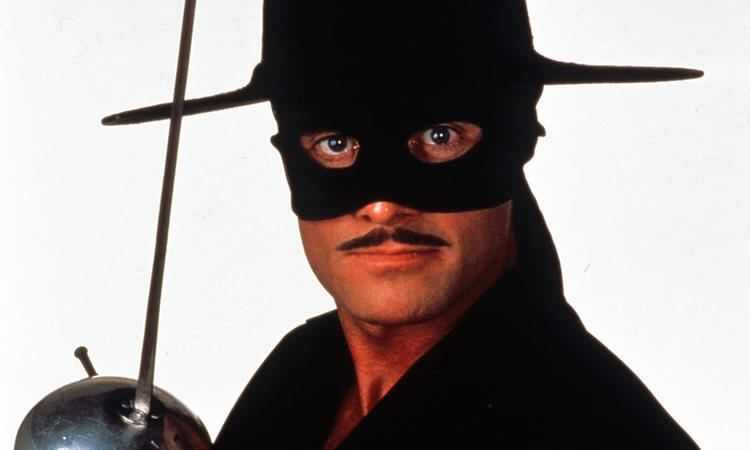
The character has undergone changes through the years, but the typical image of him is a dashing black-clad masked outlaw who defends the commoners and indigenous peoples of the land against tyrannical officials and other villains. Not only is he too cunning and foxlike for the bumbling authorities to catch, but he also delights in publicly humiliating them.
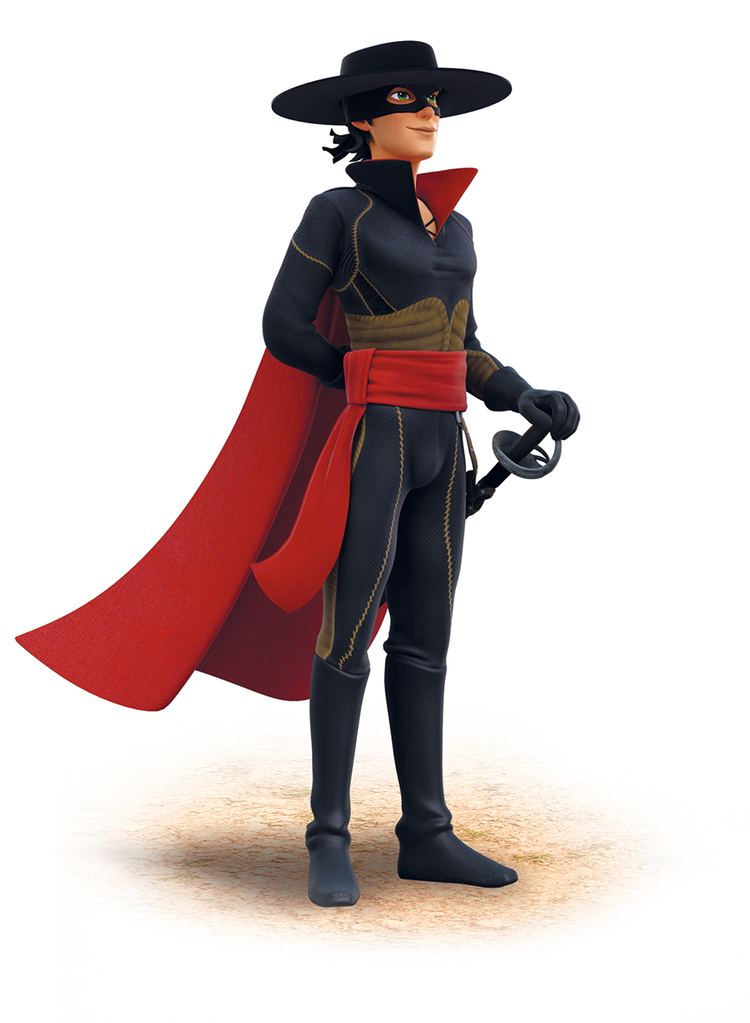
The character has been featured in numerous books, films, television series, and other media. Tiburcio Vásquez, Juan Nepomuceno Cortina and Joaquin Murrieta are cited as inspirations for Zorro.
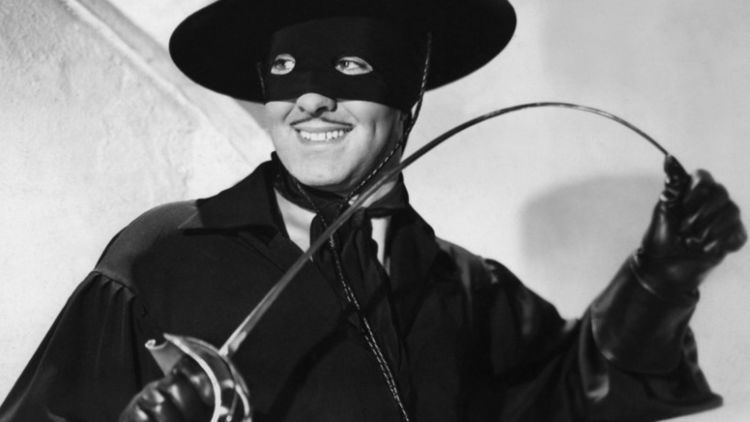
Publishing history
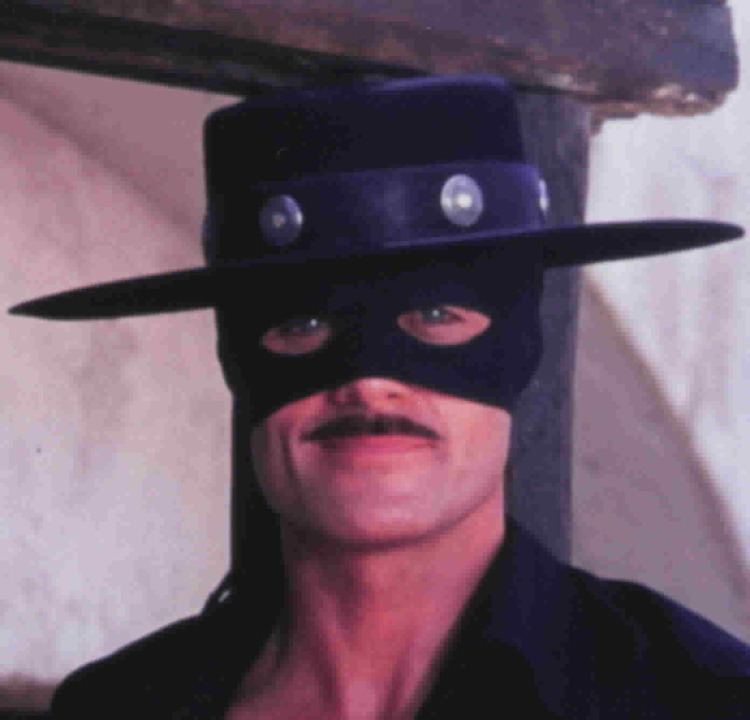
Zorro debuted in McCulley's 1919 story The Curse of Capistrano, serialized in five parts in the pulp magazine All-Story Weekly. At the denouement, Zorro's true identity is revealed to all.
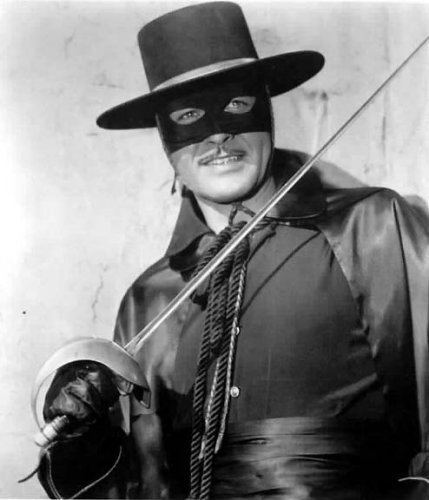
Douglas Fairbanks and Mary Pickford, on their honeymoon, selected the story as the inaugural picture for their new studio, United Artists, beginning the character's cinematic tradition. The story was adapted as the film The Mark of Zorro (1920), which was a commercial success. McCulley's story was rereleased by publisher Grosset & Dunlap under the same title, to tie in with the film.
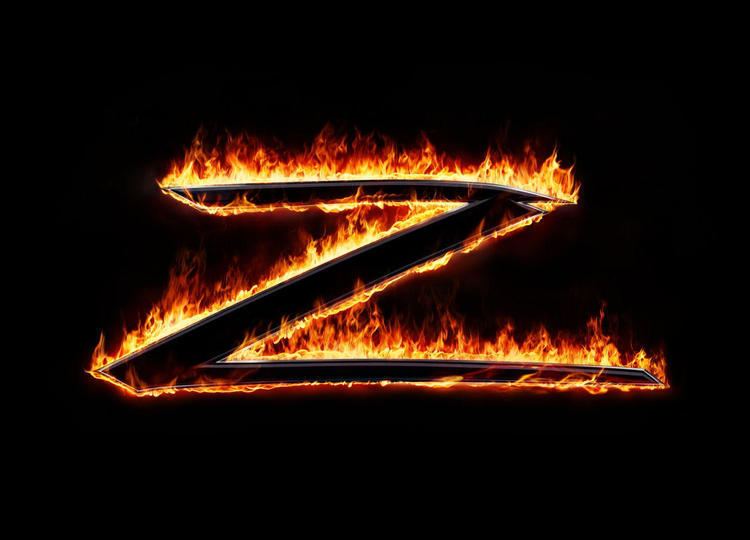
In response to public demand fueled by the film, McCulley wrote more than sixty more Zorro stories, beginning in 1922. The last, "The Mask of Zorro" (not to be confused with the 1998 film), was published posthumously in 1959. These stories ignore Zorro's public revelation of his identity. McCulley died in 1958, just as the Disney-produced Zorro television show was becoming popular.
Fictional character biography
In The Curse of Capistrano, Don Diego Vega becomes Señor Zorro in the pueblo of Los Angeles in California "to avenge the helpless, to punish cruel politicians", and "to aid the oppressed." He is the title character, as he is dubbed the "Curse of Capistrano."
The story involves him romancing Lolita Pulido, an impoverished noblewoman. While Lolita is unimpressed with Diego, who pretends to be a passionless fop, she is attracted to the dashing Zorro. His rival is Captain Ramon. Other characters include Sgt. Pedro Gonzales, Zorro's enemy but Diego's friend; Zorro's deaf and mute servant Bernardo; his ally Fray (Friar) Felipe; his father Don Alejandro Vega; and a group of noblemen (caballeros) who at first hunt him but are won over to his cause.
In later stories, McCulley introduces characters such as pirates and Native Americans, some of whom know Zorro's identity.
In McCulley's later stories, Diego's surname became de la Vega. In fact, the writer was wildly inconsistent. The first magazine serial ended with the villain dead and Diego publicly exposed as Zorro, but in the sequel the villain was alive, and the next entry had the double identity still secret.
Several Zorro productions have expanded on the character's exploits. Many of the continuations feature a younger character taking up the mantle of Zorro.
Although McCulley's stories were set in Los Angeles during the era of Mexican rule (between 1821 and 1846), some movie adaptations of Zorro's story have placed him during the earlier Spanish era.
Characteristics
In The Curse of Capistrano, Diego is described as "unlike the other full-blooded youths of the times"; though proud as befitting his class (and seemingly uncaring about the lower classes), he shuns action, rarely wearing his sword except for fashion, and is indifferent to romance with women. This is, of course, a sham. This portrayal, with minor variations, is followed in most Zorro media.
A notable exception to this portrayal is Disney's Zorro (1957–59), where Diego, despite using the original facade early in the series, instead becomes a passionate and compassionate crusader for justice and simply masquerades as "the most inept swordsman in all of California". In this show, everyone knows Diego would love to do what Zorro does, but thinks he does not have the skill.
The Family Channel's Zorro (1990–1993) takes this concept further. While Diego pretends to be inept with a sword, the rest of his facade is actually exaggerating his real interests. Diego is actually well versed and interested in art, poetry, literature, and science. His facade is pretending to be interested in only these things and to have no interest in swordplay or action. Zorro also has a well-equipped laboratory in his hidden cave in this version of the story.
Character motifs
The character's visual motif is typically a black costume with a flowing Spanish cape, a flat-brimmed black sombrero cordobés, and a black cowl sackcloth domino mask that covers the top of the head from eye level upwards. In his first appearance, he wears a cloak instead of a cape, and a black cloth veil mask with slits for eyes covers his whole face. Other features of the costume may vary.
His favored weapon is a rapier, which he often uses to leave his distinctive mark, a Z cut with three quick strokes. He also uses a bullwhip. In his debut, he uses a pistol.
The fox is never depicted as Zorro's emblem. It is used as a metaphor for the character's wiliness, such as in the lyrics "Zorro, 'the Fox', so cunning and free ..." from the Disney television show theme.
His heroic pose consists of rearing on his horse Tornado, sword raised high. (The logo of Zorro Productions, Inc. uses an example of this pose.)
Inspirations
The historical figure most often associated with the Zorro character is Joaquin Murrieta, whose life was fictionalized in an 1854 dime novel by John Rollin Ridge. In the 1998 film The Mask of Zorro Murrieta's (fictitious) brother Alejandro succeeds Diego as Zorro. As a hero with a secret identity who taunts his foes by signing his deeds, Zorro finds a direct literary predecessor in Sir Percival Blakeney, hero of the Scarlet Pimpernel pulp series by Emma Orczy.
The character recalls other figures, such as Robin Hood, Reynard the Fox, Salomon Pico, Manuel Rodríguez Erdoíza, and Tiburcio Vasquez. Another possible historical inspiration is William Lamport, an Irish soldier who lived in Mexico in the seventeenth century. His life was the subject of a fictive book by Vicente Riva Palacio; The Irish Zorro (2004) is a recent biography. Another is Estanislao, a Yokuts man who led a revolt against the Mission San Jose in 1827.
The 1890s penny dreadful treatment of the Spring-heeled Jack character as a masked avenger may have inspired some aspects of Zorro's heroic persona. Spring Heeled Jack was portrayed as a nobleman who created a flamboyant, masked alter ego to fight injustice, frequently demonstrated exceptional athletic and combative skills, maintained a hidden lair and was known to carve the letter "S" into walls with his rapier as a calling card.
Like Sir Percy in The Scarlet Pimpernel, Don Diego avoids suspicion by playing the role of an effete dandy who wears lace, writes poetry, and shuns violence. The all-black Fairbanks film costume, which with variations has remained the standard costume for the character, was likely adapted from the Arrow serial film character The Masked Rider (1919). This character was the first Mexican black-clad masked rider on a black horse to appear on the silver screen. Fairbanks's costume in The Mark of Zorro, released the following year, resembled that of the Rider with only slight differences in the mask and hat.
Books
Films
The character has been adapted for over forty films. They include:
American Feature films
In 2014 20th Century Fox were reported to be working on a reboot Zorro film called Zorro Reborn with Gael Garcia Bernal in the title role, set in the future with a script by Glen Gers, Lee Shipman, and Brian McGeevy. Sony were also reported in 2014 to be planning their own film, with a script by Christopher Stetson Boal based on the novel by Isabel Allende. This treatment created a new backstory and featured lethal fighting systems that combined swords, daggers, grappling and bare knuckles. Sony were also reported to be planning a Django Unchained and Zorro crossover movie as of December 2014. As of February 2016 Lantica Media and Sobini films are producing a Zorro film called Z with Jonas Cuaron to write and direct the film. Bernal was once again courted to star as the masked hero. Production is expected to begin in the fall.
American Film serials
Mexican films
A similar character was "The Black Wolf" set in Monterey, California in 1846.
European films
In addition to a variety of Zorro films, European producers also used a similar character called the Coyote.
The Coyote of "El Coyote" was a creation of Spanish novelist José Mallorquí Figuerola writing as Carter Mulford beginning with a novel of the same name in 1943.
Television
Audio/radio dramas
Toys
Due to the popularity of the Disney TV series, in 1958, The Topps Company produced an 88-card set featuring stills from that year's movie. The cards were rare and became collectors' items. In the same year the Louis Marx company released a variety of Zorro toys such as hats, swords, toy pistols and a playset with the Lido company also making plastic figures.
A major toy line based on the classic Zorro characters, motifs and styling, was released by Italian toy giant, Giochi Preziosi, master toy licensees of the property. The toy range was developed by Pangea Corporation and released worldwide in 2005 and featured action figures in various scales, interactive playsets and roleplaying items. New original characters were also introduced, including Senor Muerte, who served as a foil to Zorro.
In 2007, Brazilian toymaker Gulliver Toys licensed the rights to Zorro: Generation Z, which was co-developed by BKN and Pangea Corporation. The toy range was designed concurrent and in association with the animated program.
In 2011, US-based collectibles company Triad Toys released a 12-inch Zorro action figure.
Comics
Zorro has appeared in many different comic book series over the decades. In Hit Comics # 55 published by Quality Comics in November 1948, Zorro is summoned by Kid Eternity, in this version has only a whip and does not wear a mask.
Dell Comics published Zorro in Four Color Comics # 228 (1949), 425 (1952), 497 (1953), 538 (1954), 574 (1954), 617 (1955) and 732 (1957), This stories featured artwork by Everett Raymond Kinstler (497, 538, and 574), Bob Fujitani, Bob Correa and Alberto Giolitti. In 1958, it resumed publication in Four Color, based on the Disney's TV series, with the first stories featuring artwork by Alex Toth.
Zorro was given his own title in 1959, which lasted 7 more issues and then was made a regular feature of Walt Disney's Comics and Stories (also published by Dell) from #275 to #278. From 1965 to 1974, through Disney Studio Program, the Walt Disney Studio had a unit producing comic book stories exclusively for foreign consumption, to meet the demand, other countries produced Zorro comics under license from Disney: Brazil, Germany, Netherlands, Denmark and the United Kingdom.
Gold Key Comics began a Zorro series in 1966, but, like their contemporaneous Lone Ranger series, it featured only material reprinted from the earlier Dell comics, and folded after 9 issues, in 1968. The character remained dormant for the next twenty years until it was revived by Marvel Comics in 1990, for a 12-issue tie-in with the Duncan Regehr television series Zorro. Many of these comics had Alex Toth covers.
Over the years, various English reprint volumes have been published. This include but are not limited to:
In 1993 Topps Comics published a 2-issue mini-series Dracula Versus Zorro followed by a Zorro series that ran 11 issues. Topps published two miniseries of Lady Rawhide, a spin-off from the Zorro stories created by writer Don McGregor and artist Mike Mayhew. McGregor subsequently scripted a miniseries adaptation of The Mask of Zorro film for Image Comics.
A newspaper daily and Sunday strip were also published in the late 1990s. This was written by McGregor and rendered by Tom Yeates. Papercutz once published a Zorro series and graphic novels as well. This version is drawn in a manga style.
Dynamite Entertainment relaunched the character in 2008 with writer Matt Wagner first adapting Isabel Allende's novel before writing his own stories. The publisher also released an earlier unpublished tale called "Matanzas" by Don McGregor and artist Mike Mayhew. Zorro (here a 1930s descendant) also appears in the 2013 Dynamite title Masks alongside Green Hornet, Kato, The Shadow, and The Spider. Written by Chris Roberson with art by Alex Ross and Dennis Calero.
It was announced on June 18, 2014 that Quentin Tarantino would co-write a series with Matt Wagner teaming Zorro with Tarantino's character Django Freeman from the movie Django Unchained.
The character also appeared in European comics and is beloved in Latin America, usually in licensed, translated reprints of American comics. In the Netherlands, Zorro was drawn by Hans G. Kresse for the weekly Pep.
Stage productions
Approximately 65 separate Zorro live productions have been produced. These have included traditional stage plays, comedies, melodramas, musicals, children's plays, stunt shows, and ballets. Some examples include:
Music
On the commercial release of the Zorro 1957 Disney TV series' Zorro theme, the lead vocal was by Henry Calvin, the actor who played Sergeant Garcia on the program. The song was written by Jimmie Dodd.
The Chordettes sang the single version of the song, complete with the "Sounds of the Z" and the clip clopping of Zorro's horse, which is heard at the song's end. The song hit Number 17 in 1958 according to the Billboard Charts.
In 1964, Henri Salvador sang "Zorro est arrivé." It tells from a child's point of view how exciting it is whenever a villain threatens to kill a lady in the television series. But every time again, to his relief, the "great and beautiful" Zorro comes to the rescue. An early music video was made at the time.
Alice Cooper's 1982 album Zipper Catches Skin includes the song "Zorro's Ascent" which is about Zorro facing his death.
The 1999 song "El Corona" by Suburban Legends tells the story of "Don Diego", the "hombre en negro", a "tall Spaniard with a sharp sword" who was "down and out in LA" and defending the people from an unnamed corrupt ruler.
Computer and video games
Role-playing games
In July 2001, the Gold Rush Games published The Legacy of Zorro Introductory Adventure Game (ISBN 1-890305-26-X) by Mark Arsenault for Fuzion.
Copyright and trademark disputes
The copyright and trademark status of the Zorro character and stories are disputed. Zorro Productions, Inc., asserts that it "controls the worldwide trademarks and copyrights in the name, visual likeness and the character of Zorro." It further states "[t]he unauthorized, unlicensed use of the name, character and/or likeness of 'Zorro' is an infringement and a violation of state and federal laws."
In 1999, TriStar Pictures Inc. sued Del Taco, Inc., due to a fast-food restaurant advertising campaign that allegedly infringed Zorro Productions’ claims to a trademark on the character of Zorro. In an August 1999 order, the court ruled that it would not invalidate Zorro Productions’ trademarks as a result of the defendant's arguments that certain copyrights in Zorro being in the public domain or owned by third parties.
A dispute took place in the 2001 case of Sony Pictures Entertainment v. Fireworks Ent. Group. On January 24, 2001, Sony Pictures, TriStar Pictures and Zorro Productions, Inc. sued Fireworks Entertainment, Paramount Pictures, and Mercury Entertainment, claiming that the Queen of Swords television series infringed upon the copyrights and trademarks of Zorro and associated characters. Sony and TriStar had paid licensing fees to Zorro Productions, Inc., related to the 1998 film The Mask of Zorro. Queen of Swords was a 2000–2001 television series set in Spanish California during the early 19th century and featuring a hero who wore a black costume with a red sash and demonstrated similarities to the character of Zorro, including the sword-fighting skills, use of a whip and bolas, and horse-riding skills.
Zorro Productions, Inc., argued that it owned the copyright to the original character because Johnston McCulley assigned his Zorro rights to Mitchell Gertz in 1949. Gertz died in 1961, and his estate transferred to his children, who created Zorro Productions, Inc. Fireworks Entertainment argued that the original rights had already been transferred to Douglas Fairbanks, Sr. in 1920 and provided documents showing this was legally affirmed in 1929, and also questioned whether the copyright was still valid.
The court ruled that "since the copyrights in The Curse of Capistrano and The Mark of Zorro lapsed in 1995 or before, the character Zorro has been in the public domain". Judge Collins also stated that: "Plaintiffs' argument that they have a trademark in Zorro because they licensed others to use Zorro, however, is specious. It assumes that ZPI had the right to demand licenses to use Zorro at all."
In another legal action in 2010, Zorro Productions, Inc., sued Mars, Incorporated, makers of M&M's chocolate candies, and ad agency BBDO Worldwide over a commercial featuring a Zorro-like costume. The case was settled with "each party shall bear its own costs incurred in connection with this action, including its attorney's fees and costs" on August 13, 2010.
In March 2013, Robert W. Cabell, author of Z - the Musical of Zorro (1998), filed another lawsuit against Zorro Productions, Inc. The lawsuit asserted that the Zorro character is in the public domain and that the trademark registrations by Zorro Productions, Inc., are therefore fraudulent. In October, 2014, Cabell's lawsuit was dismissed, with the judge ruling that the state of Washington (where the case was filed) did not have jurisdiction over the matter. However the judge later reversed his decision and had the case transferred to California.
In June 2015, Robert W. Cabell's legal dispute with Zorro Productions, Inc. resulted in the Community Trade Mark for "Zorro" being declared invalid by the European Union's Office for Harmonization in the Internal Market for goods of classes 16 and 41. This follows the ‘Winnetou’ ruling of the Office's First Board of Appeal in which the Board of Appeal ruled that the name of famous characters cannot be protected as a trademark in these classes. Both rulings are currently being appealed. Zorro Productions, Inc. owns approximately 1300 other ZORRO related trademarks worldwide.
Legacy
Bob Kane has credited Zorro as part of the inspiration for Batman. Like Zorro, Bruce Wayne is affluent, the heir of wealth built by his parents. His everyday persona encourages others to think of him as shallow, foolish and uncaring to throw off suspicion. Frank Miller's The Dark Knight Returns and The Dark Knight Strikes Again both include multiple Zorro references like the Batman inscribing a Z on a defeated foe. In later tellings of Batman's origins, Bruce Wayne's parents are murdered by a robber as the family leaves a showing of the 1940 film The Mark of Zorro, starring Tyrone Power.
The Masked Rider, the primary mascot of Texas Tech University, is similar to Zorro.
Hanna-Barbara Productions' Pixie and Dixie cartoon featured a Zorro-like character with a mask, cape and sword known in the episode "Mark of the Mouse." Hanna-Barbara Production's El Kabong character, an alternate persona of Quick Draw McGraw is loosely based upon Zorro.
A cave that was used as a filming location in various Zorro productions is now known as "Zorro's Cave" and remains in place, now hidden behind a condominium complex, on land that was once the Iverson Movie Ranch in Chatsworth, Calif., recognized as the most widely filmed outdoor shooting location in the history of Hollywood.
